Search results for 'SELECT * FROM MM_MOVIE;'
-

ITS320 Module 1 Option 1 Create a Python Application that outputs mouse
Regular Price: $10.00
Special Price $8.00
ITS320 Module 1 Option 1 Create a Python Application that outputs mouse
Option #1: Create a Python Application
Write a Python Program that outputs this mouse:
(\-.
/ _`>
_) / _)=
( / _/
`-.__(___)_
Assignment Instructions
1. Install Python3 on your computer if you do not have it already installed it. You can download it from https://www.python.org/downloads/release/python-362/.
2. Make sure you check the box to include the Python executable in your environment path.
3. Edit your Python program using your choice of editor such as Notepad, Notepad++, or Idle. Idle is a simple Python interactive development environment that installed with your Python package.
4. Save your Python code using the file name ITS320_CTA1_Option1.py.
5. Execute your Python code in command prompt as python ITS320_CTA1_Option1.Assignment Deliverables
Learn More
• Submit the text file named ITS320_CTA1_Option1.py that contains your Python code into the Module 1 drop box -
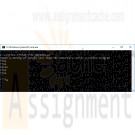
ITS320 Module 2 Option 1 Creating a Python Application for string validation
Regular Price: $10.00
Special Price $8.00
ITS320 Module 2 Option 1 Creating a Python Application for string validation
Option #1: Creating a Python Application
Python has built-in string validation methods for basic data. It can check if a string is composed of alphabetical characters, alphanumeric characters, digits, etc.
str.isalnum() This method checks if all the characters of a string are alphanumeric (a-z, A-Z and 0-9).
>>> print 'ab123'.isalnum()
True
>>> print 'ab123#'.isalnum()
False
str.isalpha() This method checks if all the characters of a string are alphabetical (a-z and A-Z).
>>> print 'abcD'.isalpha()
True
>>> print 'abcd1'.isalpha()
False
str.isdigit() This method checks if all the characters of a string are digits (0-9).
>>> print '1234'.isdigit()
True
>>> print '123edsd'.isdigit()
False
str.islower() This method checks if all the characters of a string are lowercase characters (a-z).
>>> print 'abcd123#'.islower()
True
>>> print 'Abcd123#'.islower()
FalseSAMPLE
str.isupper() This method checks if all the characters of a string are uppercase characters (A-Z).
>>> print 'ABCD123#'.isupper()
True
>>> print 'Abcd123#'.isupper()
FalseAssignment Instructions:
Write a Python program that performs the following tasks:
1. Read from the console an arbitrary string S of length less than 50 characters.
2. In the first output line, print True if S has any alphanumeric characters. Otherwise, print False.
3. In the second line, print True if S has any alphabetical characters. Otherwise, print False.
4. In the third line, print True if S has any digits. Otherwise, print False.
5. In the fourth line, print True if S has any lowercase characters. Otherwise, print False.
6. In the fifth line, print True if S has any uppercase characters. Otherwise, print False.
7. Develop Python code that implements the program requirements.Assignment Deliverables:
Learn More
• Submit a text file containing your Python code into the Module 2 drop box. Name your file ITS320_CTA2_Option1.py -
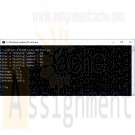
ITS320 Module 4 Option 1 Repetition Control Structure – Five Floating Point Numbers
Regular Price: $10.00
Special Price $8.00
ITS320 Module 4 Option 1 Repetition Control Structure – Five Floating Point Numbers
Option #1: Repetition Control Structure – Five Floating Point Numbers
Assignment Instructions
Write a program that utilizes a loop to read a set of five floating-point values from user input. Ask the user to enter the values, then print the following data:
• Total
• Average
• Maximum
• Minimum
• Interest at 20% for each original value entered by the user.
• Use the formula: Interest_Value = Original_value + Original_value*0.2Assignment Submission Instructions
Learn More
• Submit a text file containing your Python code into the Module 4 drop box. Name your file ITS320_CTA4_Option1.py. -
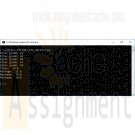
ITS320 Module 4 Option 2 Repetition Control Structure – Grade Statistics
Regular Price: $10.00
Special Price $8.00
ITS320 Module 4 Option 2 Repetition Control Structure – Grade Statistics
Option #2: Repetition Control Structure – Grade Statistics
Assignment Instructions
1. Write a program that will provide important statistics for the grades in a class. The program will utilize a loop to read five floating-point grades from user input.
2. Ask the user to enter the values, then print the following data:
• Average
• Maximum
• MinimumAssignment Submission Instructions
Learn More
• Submit a text file containing your Python code into the Module 4 drop box. Name your file ITS320_CTA4_Option2.py -
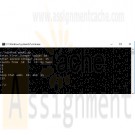
DAT 210 Week 2 Using Loops in Python
Regular Price: $12.00
Special Price $10.00
DAT 210 Week 2 Using Loops in Python
You recently graduated college and you are applying for a programming job that requires the understanding of loops in Python. The manager you are interviewing with has asked you to take an assessment to prove your programming knowledge. Below are the requirements for the programming skills test.
DAT 210 Week 2 Using Loops in Python
You recently graduated college and you are applying for a programming job that requires the understanding of loops in Python. The manager you are interviewing with has asked you to take an assessment to prove your programming knowledge. Below are the requirements for the programming skills test.
In Python, create a program that meets the following requirements:
• Take two integers from the user.
• Save the lower number as x.
• Save the largest integer as y.
• Write a loop that counts from x to y by twos.
• Print out the values of that loop using the Print function in Python.
• Write another loop that adds x and y, and saves the value as Z.
• Print out the values of Z using the Print function in Python.Provide the code and take a screenshot of the output, then paste the screenshot(s) into a Microsoft® Word document.
Review Chapters 6 and 11 of Python for Everyone if you have additional questions on creating a program in Python.
Submit your document.
In Python, create a program that meets the following requirements:
• Take two integers from the user.
• Save the lower number as x.
• Save the largest integer as y.
• Write a loop that counts from x to y by twos.
• Print out the values of that loop using the Print function in Python.
• Write another loop that adds x and y, and saves the value as Z.
• Print out the values of Z using the Print function in Python.
Provide the code and take a screenshot of the output, then paste the screenshot(s) into a Microsoft® Word document.
Review Chapters 6 and 11 of Python for Everyone if you have additional questions on creating a program in Python.
Submit your document.
Learn More -
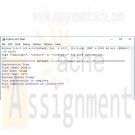
CIS115 Week 1 Lab Building a Registration Form and Pay Calculator in Python
Regular Price: $12.00
Special Price $10.00
CIS115 Week 1 Lab Building a Registration Form and Pay Calculator in Python
CIS115 Week 1 Lab Overview
Title of Lab: Building a Registration Form and Pay Calculator in Python
Summary – Part 1
Create a program that allows a student to complete a registration form and displays a completion message that includes the user's full name and a temporary password.Summary – Part 2
Create a program that calculates a user's weekly gross and take-home pay.Deliverables
• 2 source code Python files.
• A Word document containing both source code and the screen print of the program outputs.Lab Steps
Part 1 – Registration FormSample Output:
Registration Form
First Name: Eric
Last Name: Idle
Birth Year: 1934
Welcome Eric Idle!
Your Registration is complete.
Your temporary password is: Eric*1934Specifications:
• The user's full name consists of the user's first name, a space, and the user's last name.
• The temporary password consists of the user's first name, an asterisk (*), and the user's birth year.
• Assume the user will enter valid data.INPUT PROCESSING OUTPUT
first_name password=first_name + "*" + str(birth_year) password
last_name
birth_year
Part 2 – Pay CalculatorSample Output:
Pay Check Calculator
Hours Worked: 35
Hourly Pay Rate: 14.50
Gross Pay: 507.5
Tax Rate: 18
Tax Amount: 91.35
Take Home Pay: 416.15• The formula for calculating gross pay is:
o gross pay = hours worked * hourly rate
• The formula for calculating tax amount is:
o tax amount = gross pay * (tax rate / 100)
• The formula for calculating take home pay is:
o take home pay = gross pay - tax amount
• The tax rate should be 18%, but the program should store the tax rate in a variable so that you can easily change the tax rate later, just by changing the value that's stored in the variable.
• The program should accept decimal entries like 35.5 and 14.25.
• Assume the user will enter valid data.
• The program should round the results to a maximum of two decimal places.INPUT PROCESSING OUTPUT
Learn More
hours gross_pay = round(hours * pay_rate, 2) gross_pay
pay_rate tax_rate = 18 tax_rate
tax_amount = round(gross_pay * (tax_rate / 100), 2) tax_amount
take_home_pay = round(gross_pay - tax_amount, 2) take_home_pay -
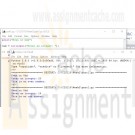
CIS115 Week 2 Lab Even or Odd and Grade Checker in Python
Regular Price: $12.00
Special Price $10.00
CIS115 Week 2 Lab Even or Odd and Grade Checker in Python
CIS115 Week 2 Lab Overview
Title of Lab: Even or Odd and Grade Checker in Python
Summary - Part 1
Create a program that checks whether a number is even or odd.Summary - Part 2
Create a program that checks one's letter grade.Deliverables
• 2 source code Python files.
• A Word document containing both source code and the screen print of the program outputs.Lab Steps
Part 1 - Even or OddSample Output:
Even or Odd
Enter an integer: 20
This is an even number.Specifications:
• Use the selection structure.
• Assume that the user will enter a valid integerPart 2 - Pay Calculator
Make sure to use the following criteria:
• 100 - 90: A
• 89 - 80: B
• 79 - 70: C
• 69 - 60: D
• 59 and below: FSample Output:
Grade Checker
Enter your grade: 88
You earned a B• Assume the user will enter valid data.
Learn More
• Selection structure needs to be used. -
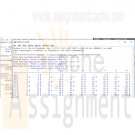
CIS115 Week 4 Lab Multiplication Table in Python
Regular Price: $12.00
Special Price $10.00
CIS115 Week 4 Lab Multiplication Table in Python
CIS115 Week 4 Lab Overview
Title of Lab: Multiplication Table in Python
Summary
This week's lab is to create a simple multiplication table using nested loops and if statements.
Prompt the user for the size of the multiplication table (from 2x2 to 10x10). Use a validation loop to display a warning if the number is less than 2 or greater than 10 and prompt the user to enter the data again until they enter a valid number.
Put a # after any even number in your table (odd numbers will have just a space/nothing after them).Deliverables
• A source code Python file.
• A Word document containing both source code and the screen print of the program outputs.Lab Steps
Sample Output:
The output should be something similar to the following.
What size multiplication table would you like? (2 - 10): 1
Invalid entry - Enter a number between 2 and 10
What size multiplication table would you like? (2 - 10): 15
Invalid entry - Enter a number between 2 and 10
What size multiplication table would you like? (2 - 10): 10--- Multiplication Table ( 10 x 10 ) ---
1 2 3 4 5 6 7 8 9 10
---------------------------------------------------------------------------
1 | 1 2 # 3 4 # 5 6 # 7 8 # 9 10 #
2 | 2 # 4 # 6 # 8 # 10 # 12 # 14 # 16 # 18 # 20 #
3 | 3 6 # 9 12 # 15 18 # 21 24 # 27 30 #
4 | 4 # 8 # 12 # 16 # 20 # 24 # 28 # 32 # 36 # 40 #
5 | 5 10 # 15 20 # 25 30 # 35 40 # 45 50 #
6 | 6 # 12 # 18 # 24 # 30 # 36 # 42 # 48 # 54 # 60 #
7 | 7 14 # 21 28 # 35 42 # 49 56 # 63 70 #
8 | 8 # 16 # 24 # 32 # 40 # 48 # 56 # 64 # 72 # 80 #
9 | 9 18 # 27 36 # 45 54 # 63 72 # 81 90 #
10 | 10 # 20 # 30 # 40 # 50 # 60 # 70 # 80 # 90 # 100 #
Hints:
• The outer loop will start each new row.
• The inner loop will control the display of each column in the row.
• Note that to keep the numbers right-aligned, there are different amounts of space before single digit numbers (those less than 10), double digit numbers (those between 10-99), and triple digit numbers (100).
• The row labels can be added to your inner loop (note that there are different amounts of space required after the number in the row labels.
• The column labels should use a separate loop(s) that run before the main outer loop.
• You can continue printing on the same line using end="" in your print statement. This will come in handy if you want to print several things on one line inside a loop. For example, assuming the value of name is Ada, the following will print "Hello Ada" on one line:
print("hello ", end="")
print(name, end="")Tips:
Learn More
• Start early!
• Do the basic table first without worrying about spacing or lining things up, and don't include row or column headings (add those later).
• Once you get the numbers in the correct position, think about adding the proper amount of space before each number to line things up.
• Once the columns line up, add the #/space for even/odd numbers.
• Once the basic table is working, then add the row and column headings, and finally the main title.
• Test as you go! -
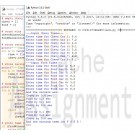
CIS115 Week 5 Lab Race Time Sorting in Python
Regular Price: $12.00
Special Price $10.00
CIS115 Week 5 Lab Race Time Sorting in Python
CIS115 Week 5 Lab Overview
Title of Lab: Race Time Sorting in Python
Summary
Store the times into arrays called Chevy[ ] and Ford[ ]. Then list the winner of each pair, giving the number of seconds the winner won by. At the end declare which team won based on which team had the most wins.Deliverables
• A source code Python file.
• A Word document containing both source code and the screen print of the program outputs.Lab Steps
There are eight cars in each team called Chevy and Ford. One car from each team races its opponent on the drag strip. Read in the racing times for the eight Chevy cars and then read in the times for the eight Ford cars.Sample Match:
---Input Chevy Times---
Enter time for Chevy Car 1: 5.4
Enter time for Chevy Car 2: 7.2
Enter time for Chevy Car 3: 4.0
Enter time for Chevy Car 4: 9.1
Enter time for Chevy Car 5: 5.8
Enter time for Chevy Car 6: 3.9
Enter time for Chevy Car 7: 6.2
Enter time for Chevy Car 8: 8.1
---Input Ford Times---
Enter time for Ford Car 1: 5.8
Enter time for Ford Car 2: 6.9
Enter time for Ford Car 3: 3.9
Enter time for Ford Car 4: 9.2
Enter time for Ford Car 5: 5.8
Enter time for Ford Car 6: 3.8
Enter time for Ford Car 7: 6.0
Enter time for Ford Car 8: 8.5
And the winners are:
Chevy by 0.4 sec
Ford by 0.3 sec
Ford by 0.1 sec
Chevy by 0.1 sec
Tie!
Ford by 0.1 sec
Ford by 0.2 sec
Chevy by 0.4 sec
And the winning team is: F O R D !Specifications:
Learn More
• Accept the racing times for each of the Chevy cars into the array Chevy[ ].
• Accept the racing times for each of the Ford cars into the array Ford[ ].
• Then declare the wining car for each race, giving the winning time in seconds.
• If the times are identical, then declare the race was a tie.
• Finally, declare which team won the match, assuming a tie is possible. -
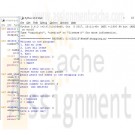
CIS115 Week 6 Lab Shopping List in Python
Regular Price: $12.00
Special Price $10.00
CIS115 Week 6 Lab Shopping List in Python
CIS115 Week 6 Lab Overview
Title of Lab: Shopping List in Python
Summary
Create a program that will allow a user to add, list, and delete items from a shopping list.Deliverables
• A source code Python file.
• A Word document containing both source code and the screen print of the program outputs.Lab Steps
The program should be modular. For example, you will want to have an add_item(shopping_list) function, a delete_item(shopping_list) function, a display_list(shopping_list) function, a display_menu() function, and a main().Sample Output:
Welcome to the program!
1. Add an item
2. List all items
3. Delete an item
4. ExitEnter a menu option: 2
1 : bananas
2 : applesEnter a menu option: 1
Please enter the item: pears
pears was added to the shopping listEnter a menu option: 2
1 : bananas
2 : apples
3 : pearsEnter a menu option: 3
Which number to delete: 3
pears was deletedEnter a menu option: 2
1 : bananas
2 : applesEnter a menu option: 4
have a great day!Specifications:
Learn More
• The program should start with 2 items in the shopping list.
• Don't forget to include at the end of the program the code:
o if __name__ == "__main__":
main();
• Use this code for the delete_item(shopping_list) function:
def delete_item(shopping_list):
number=int(input("Which number to delete: "))
if number<1 or number>len(shopping_list):
print("Invalid number\n")
else:
item=shopping_list.pop(number-1)
print(item," was deleted\n")
print()




